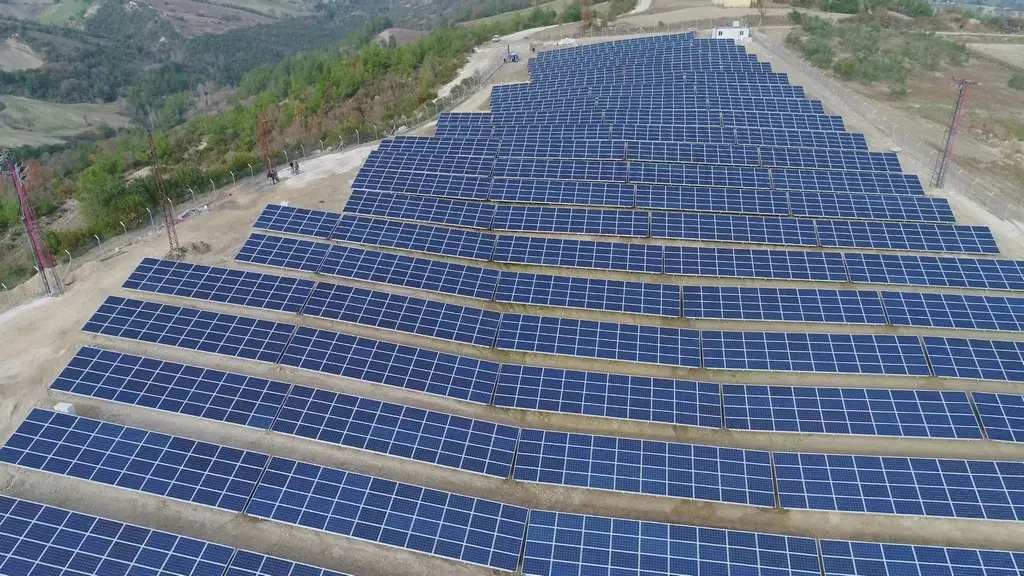It is one of the sub-projects within the scope of Sustainable Cities Project-II Additional Financing (SCP-II-EF) to support sustainable development in cities in Turkey. SCP-II-EF aims to invest in sustainable urban development and develop project approaches related to the development of renewable energy sources, mitigation of disasters and climate change, and city resilience against risks. The project, financed by the World Bank (WB), was carried out by İller Bankası A.Ş. It will be carried out by Kadirli Municipality. The project aims to contribute to local development by providing clean energy to the water treatment facility in Kadirli District by using solar energy and meeting the energy needs. Kadirli Solar Power Project aims to reduce the consumption costs of the district by obtaining the electrical energy needs of the water treatment facility used in the district from clean and renewable energy sources. In this context, the Project will be constructed with a 30-year usage period of the power plant to be established. The solar power project is expected to produce 2,060.3 Mwh of electricity annually. The population expected to be served by the project is approximately 98,469people. The project will be built on an area of approximately 24,248.82 m2 on parcel 135/21 in Osmaniye province, Kadirli District, Kurtuluş District.
Expected results of the project are as follows:
- The project aims to meet the energy needs of the water treatment plant, which constitutes a large part of the energy consumption of the municipality in the Kadirli district of Osmaniye, from solar energy. will provide the district with access to clean, accessible and affordable water, - The project will reduce dependence on fossil fuels in energy and ensure the economic development of the district, - The project will contribute to Turkey's efforts to comply with national and international quality standards in the renewable energy resources sector; - By using clean energy sources, a step will be taken in the fight against climate change and will contribute to the environmental and economic welfare of the local people. The construction of the project is planned to be completed in six (6) months. Local people will be given priority in the recruitment process of the project. The project will comply with national legislation as well as good international practices, including WB Conservation Policies, guidelines, standards and best practice documents.
The project will create job opportunities for local people during the construction and operation phase. Since the installed power capacity of the Solar Power Plant project is below 1 MW, the construction works are expected to be completed in a very short period of time, road closures will be avoided as much as possible, businesses around the project are not expected to close due to construction activities
Management of expected impacts An Environmental and Social Management Plan (ESMP) has been developed for to suggest
In addition, monitoring and auditing activities to be implemented within the scope of ESMP will also be defined. Within the scope of ESMP studies, impacts that may occur such as soil and air environments, noise, odor, water resources, waste, traffic, ecosystem, natural disaster risks in the area where the project will be established, reflection and glare effects that may occur due to solar power plants will be determined and relevant mitigation measures will be specified. Monitoring requirements will also be defined and presented in the monitoring tables within the scope of the ESMP. Accordingly, during the construction phase of the project, topsoil loss and compaction, soil and water pollution that will occur due to the leakage of pollutants and chemicals into the soil and groundwater, dust emissions, noise that will occur during the construction of the project and temporary traffic load, waste production and occupational health and safety during the operation phase. storage and use of chemicals, waste, noise, reflection and glare effect of the power plant, livelihoods, complaints, community conflicts, stakeholder participation, occupational health and safety and workforce parameters in accordance with the conditions determined in the ESMP. will be monitored. The main institution responsible for the implementation of this Environmental and Social Management Plan (ESMP) is Kadirli Municipality, which is also responsible for the construction and operation phases of the project. Additionally, at different stages of the project, various parties (Contractors, Consultant firm, Project Implementation Unit, ILBANK, etc.) will take responsibility for various issues within the scope of ESMP. All the mentioned works will be coordinated by Kadirli Municipality. Project documents will also be published on the website of Kadirli Municipality and these documents will be shared by Kadirli Municipality upon request.
Kadirli Municipality has established a Grievance Redressal Mechanism to receive, resolve and follow up on the concerns and complaints of communities affected by the Project. . All complaints will be effectively received, recorded and responded to within a predetermined timeline and according to their content. The institution responsible for the establishment and implementation of the Grievance Redressal Mechanism will be Kadirli Municipality. In this context, the following communication channels can also be used to share expectations, opinions, suggestions and complaints about the project:
Stakeholder Participation Meetings Kadirli Municipality: Phone:0(328) 718 10 39 0(328) 718 21 04
E-mail: municipal@kadirli.bel.tr
All internal and external stakeholders can submit their complaints and feedback about the project directly will also have the right to benefit from other grievance redressal mechanisms such as the Presidential Communication Center (CİMER), which is used nationwide and is accessible to all project stakeholders as an alternative and well-known channel for communication to government authorities.
www.cimer.gov. .tr
Call center:150
Phone number: +90 312 590 20 00
